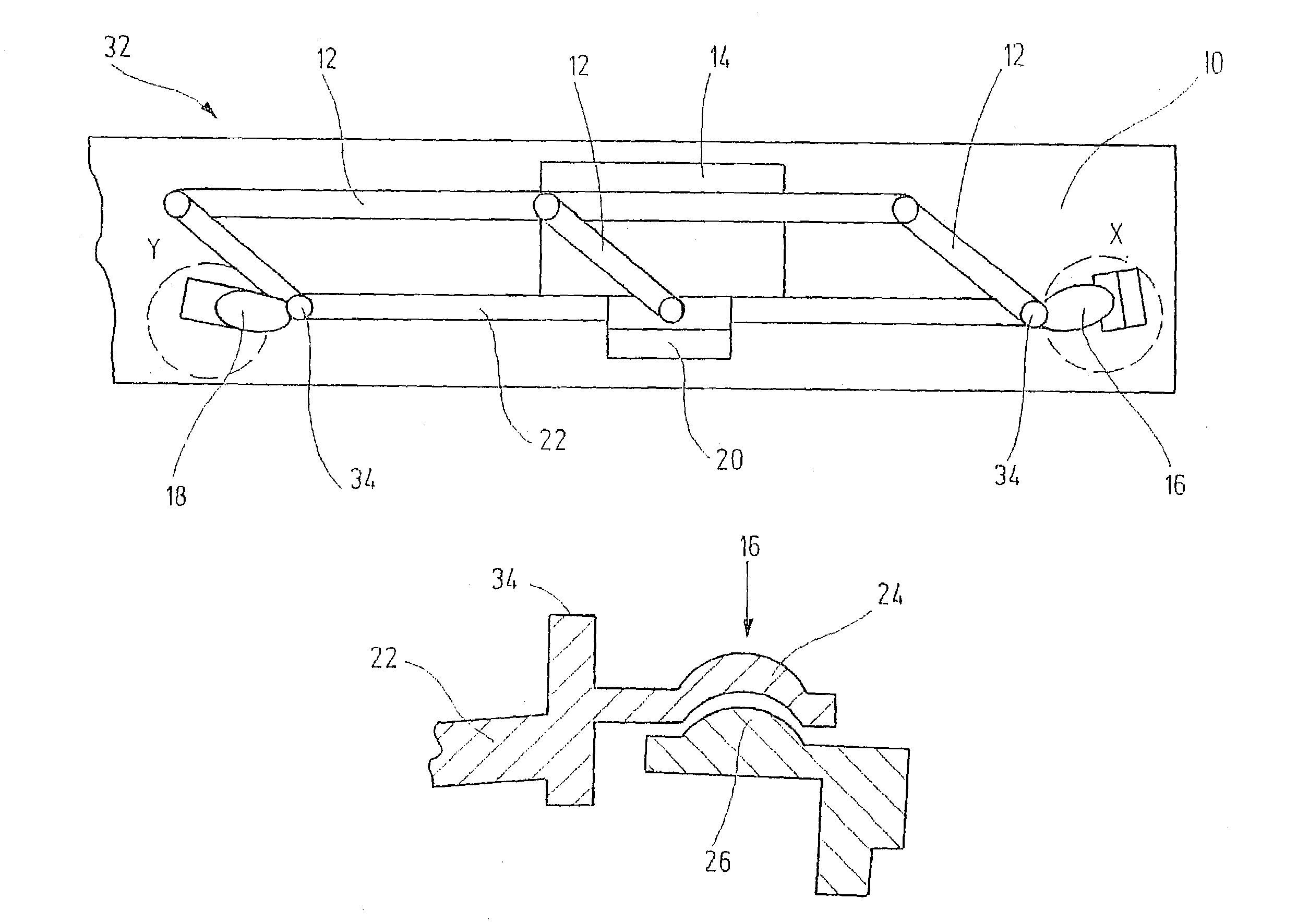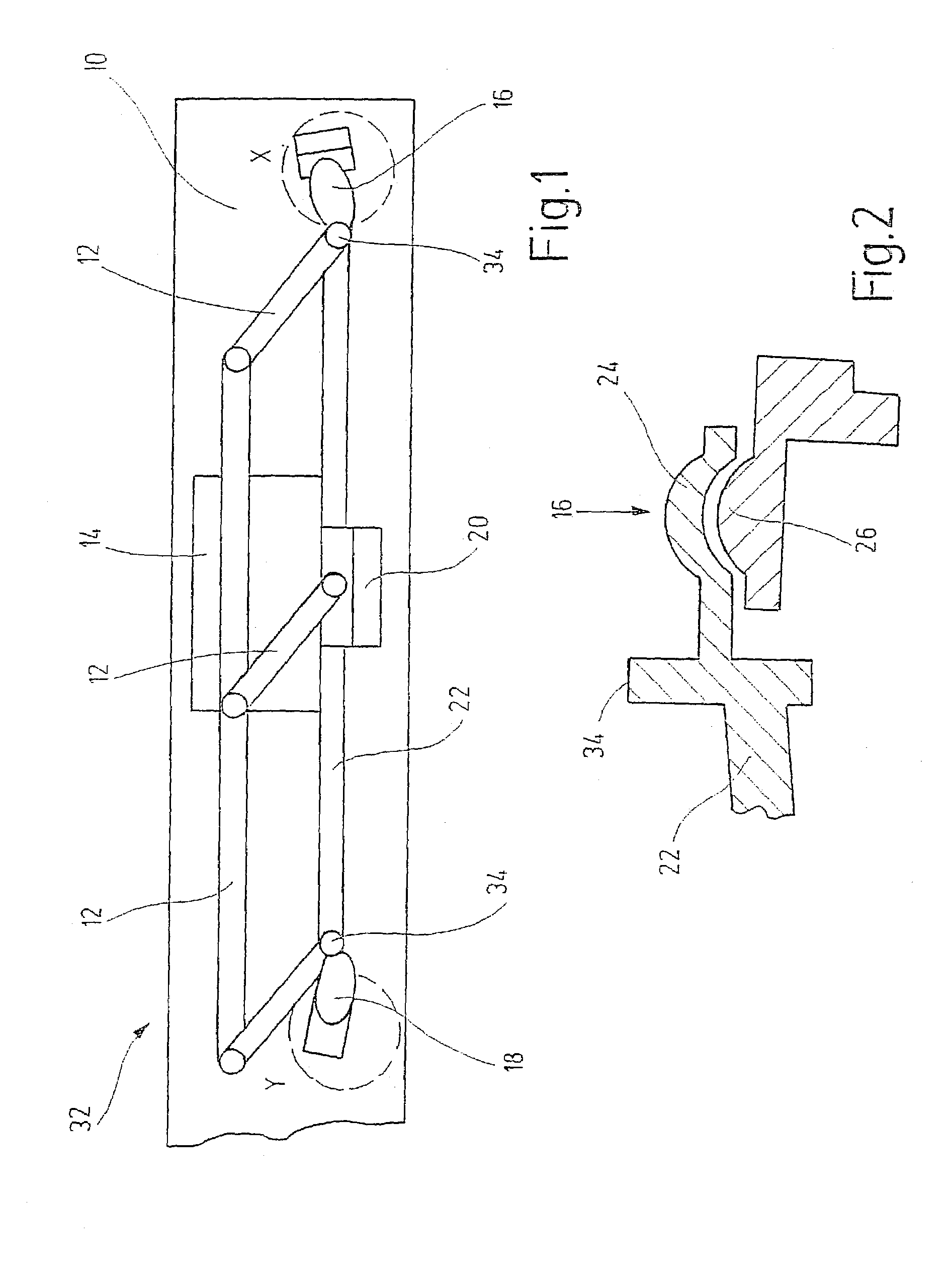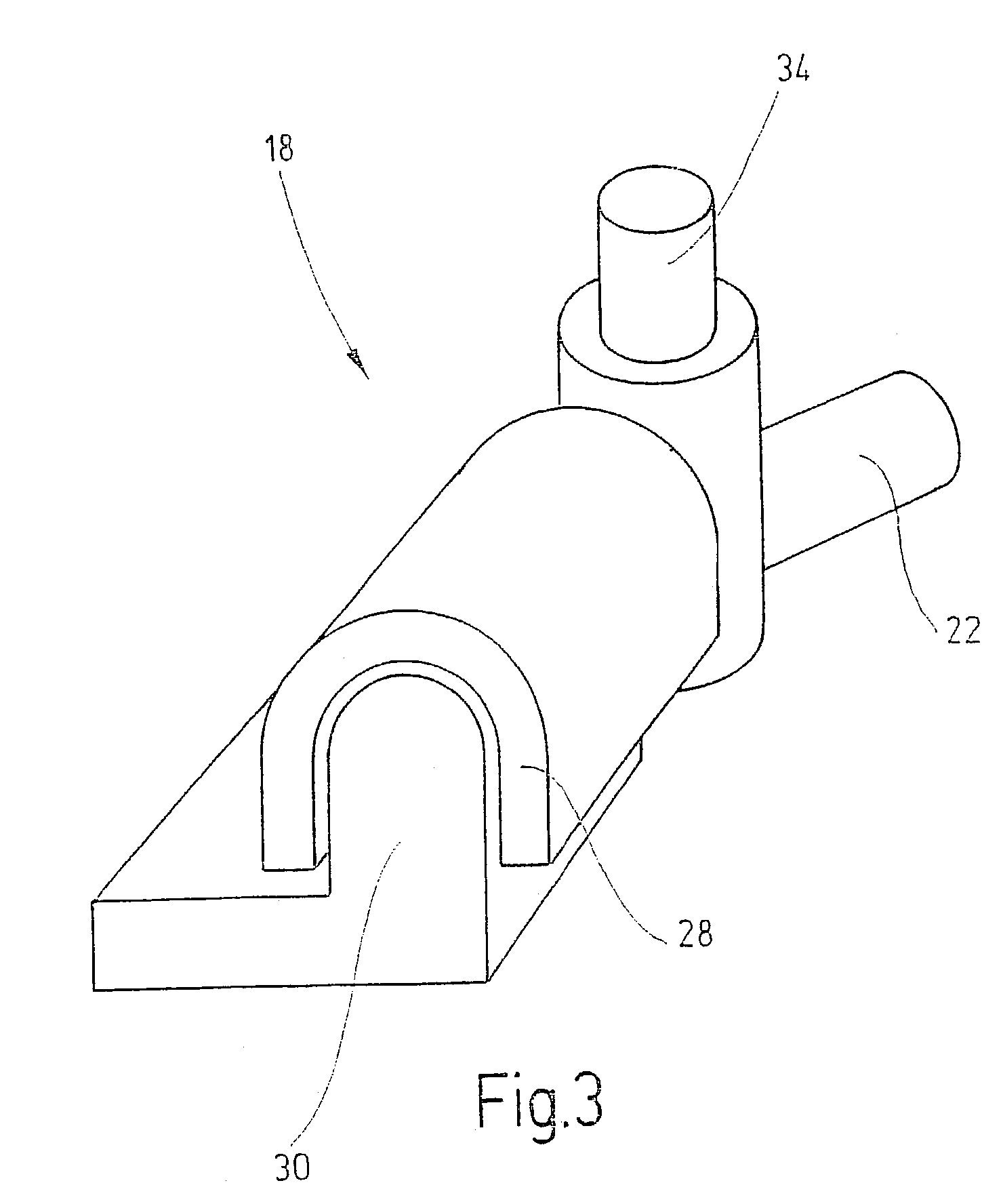Fixing device for a windscreen wiper system
- Summary
- Abstract
- Description
- Claims
- Application Information
AI Technical Summary
Benefits of technology
Problems solved by technology
Method used
Image
Examples
Embodiment Construction
[0009]The attachment of a windshield wiper system 32 to a vehicle body 10 is shown schematically in FIG. 1. The windshield wiper system 32—which is in itself known—comprises a sheet bar 22 outfitted on each of its ends with an appropriate fastening site 16 and 18. On the one hand, a drive motor 14 is secured to the sheet bar 22 via a third fastening site 20, and, on the other hand, a fastening of the windshield wiper system 32 to the vehicle body 10 takes place via the third fastening site 20. The drive motor 14 is interconnected with the wiper shafts 34 supported on the sheet bar 22 via a coupling linkage 12 to activate the windshield wipers. The windshield wiper systems 32 are preassembled and then installed in the appropriate vehicle as an assembly.
[0010]The fastening of the windshield wiper system 32, in particular to the vehicle body 10 of motor vehicles, takes place according to the invention in that the fastening sites of the windshield wiper system 32 are bonded with a faste...
PUM
| Property | Measurement | Unit |
|---|---|---|
| Angle | aaaaa | aaaaa |
| Thickness | aaaaa | aaaaa |
| Force | aaaaa | aaaaa |
Abstract
Description
Claims
Application Information
 Login to View More
Login to View More - R&D
- Intellectual Property
- Life Sciences
- Materials
- Tech Scout
- Unparalleled Data Quality
- Higher Quality Content
- 60% Fewer Hallucinations
Browse by: Latest US Patents, China's latest patents, Technical Efficacy Thesaurus, Application Domain, Technology Topic, Popular Technical Reports.
© 2025 PatSnap. All rights reserved.Legal|Privacy policy|Modern Slavery Act Transparency Statement|Sitemap|About US| Contact US: help@patsnap.com



